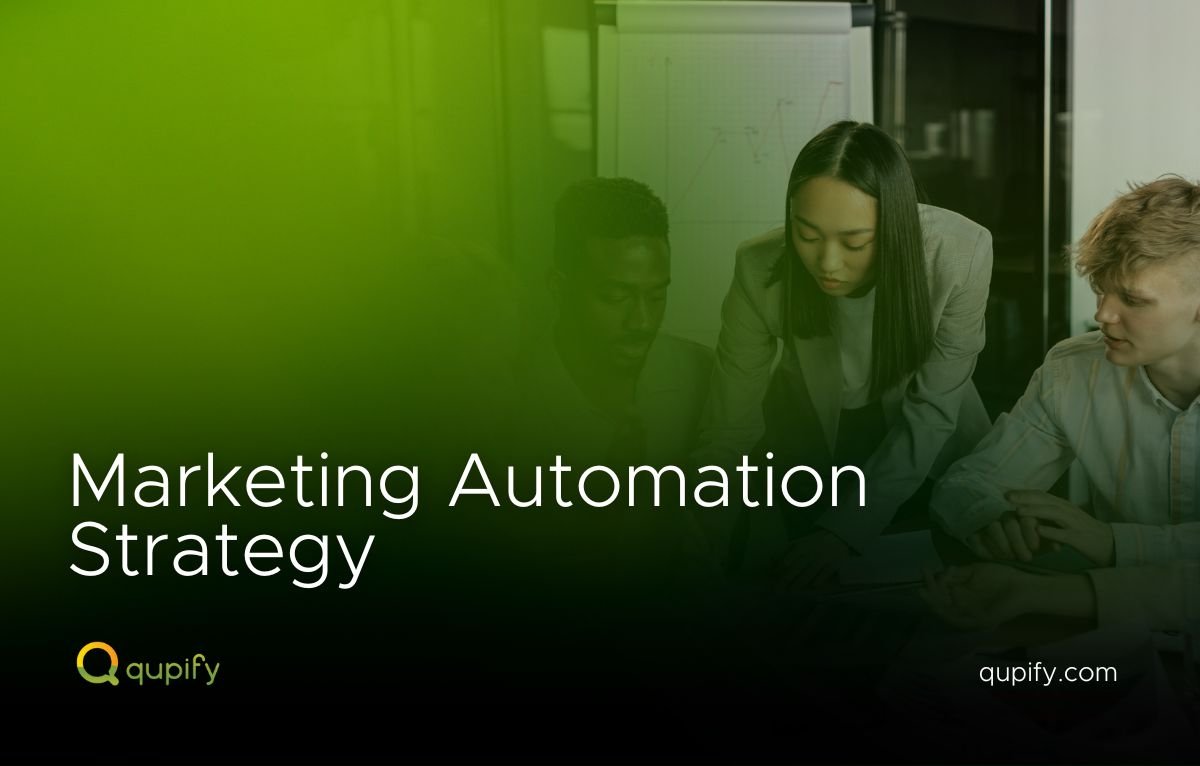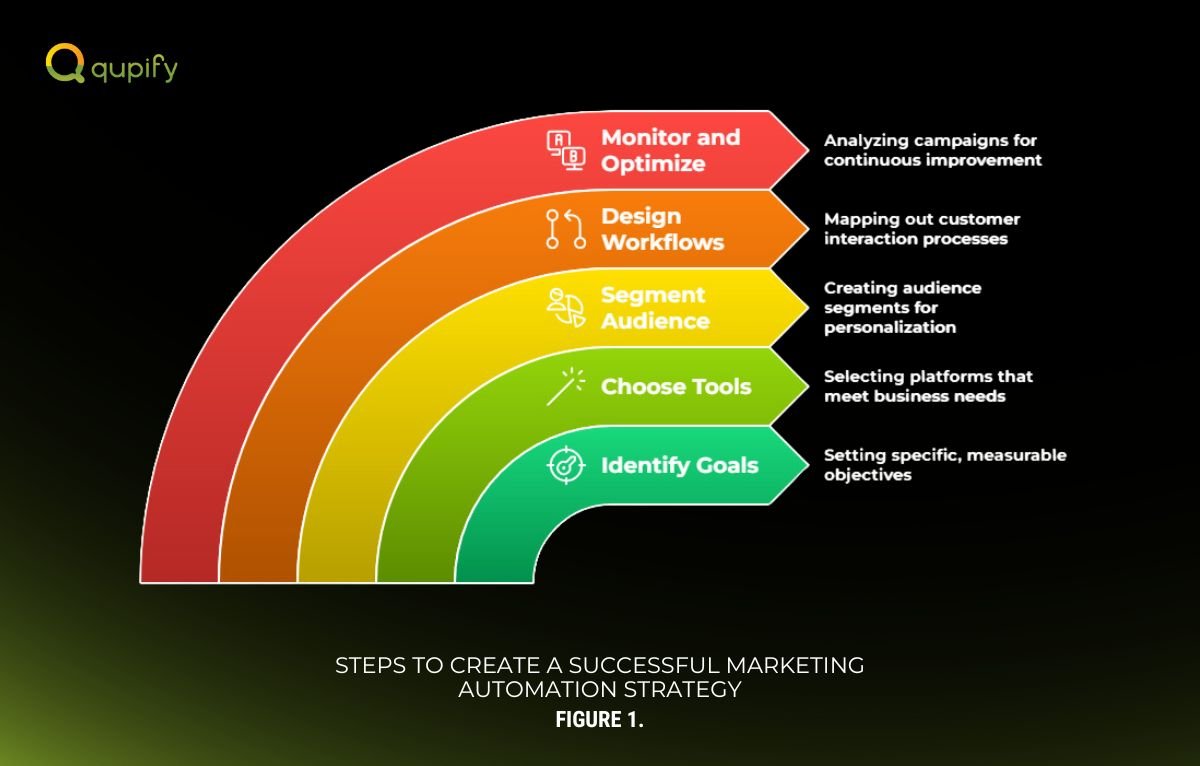How to Create a Marketing Automation Strategy
Marketing automation has become a game-changer for businesses in today’s fast-paced digital world. It empowers marketers to streamline their workflows, save time, and connect with their audience on a more personalized level.
Research shows that 80% of marketers who use automation report generating more leads, and 77% see improved conversion rates.
However, simply adopting automation tools isn’t enough to achieve success. Businesses need a well-defined strategy to harness the full potential of marketing automation.
Without a clear plan, automation can lead to wasted resources and missed opportunities to engage with the right audience.
This guide will explore the importance of a marketing automation strategy, its core components, and actionable steps to help you build an effective plan for your business.

What is Marketing Automation?
Marketing automation uses technology to automate repetitive tasks, such as email campaigns, social media scheduling, lead nurturing, and performance tracking.
By automating these processes, businesses can engage with their audience consistently and at scale, freeing up valuable time for strategic efforts.
One of the key benefits of marketing automation is its ability to deliver timely, relevant, and personalized messages to customers.
This ensures a seamless experience across the customer journey, from the first interaction to post-purchase follow-ups.
With marketing automation, businesses can enhance efficiency, improve customer satisfaction, and drive better results.
Why Do You Need a Marketing Automation Strategy?
A marketing automation strategy serves as a roadmap for maximizing the benefits of automation tools. It ensures that every automated process aligns with your business goals and resonates with your audience.
Improves Efficiency
Automation removes the need for repetitive manual tasks, such as sending follow-up emails or scheduling posts. This allows teams to allocate their time to more strategic initiatives, like developing creative campaigns or analyzing customer insights.
Enhances Personalization
With automation, businesses can craft personalized messages based on customer behavior, preferences, or lifecycle stages. For example, a customer who recently browsed a product online can receive a tailored email with recommendations, increasing the likelihood of conversion.
Increases ROI
A thoughtful strategy helps you optimize campaigns, ensuring your resources are used effectively. Targeted messaging and automated workflows result in higher engagement, improved lead quality, and increased sales, leading to a stronger return on investment.
Aligns Teams
Automation bridges the gap between marketing and sales by streamlining processes like lead scoring and handoffs. When both teams work cohesively, businesses can deliver a consistent experience and close more deals.
Components of a Marketing Automation Strategy
To succeed with marketing automation, businesses need to focus on several essential components that form the backbone of a solid strategy.
Defining Goals
Clear goals set the foundation for any successful marketing automation strategy. Whether your objective is to generate leads, boost customer retention, or improve engagement, defining measurable outcomes ensures your efforts stay focused and trackable.
Audience Segmentation
Segmentation involves dividing your audience into groups based on shared characteristics, such as demographics, behavior, or purchase history. This allows you to send targeted campaigns that resonate with specific segments.
For instance, segmenting your audience by location lets you tailor promotions to different regions.
Content Creation
High-quality content is the backbone of marketing automation. From educational blog posts to personalized email sequences, your content should address your audience’s needs and pain points. Creating content for each stage of the customer journey helps guide prospects toward conversion.
Workflow Design
Automated workflows define how customers move through your marketing funnel. These workflows include triggers, such as signing up for a newsletter, and actions, like sending a welcome email.
A well-structured workflow ensures every interaction adds value and moves the customer closer to making a purchase.
Metrics and Analytics
Regularly tracking performance metrics like open rates, click-through rates, and conversions helps you gauge the success of your strategy.
Analytics provide actionable insights, enabling you to refine campaigns for better results over time.
Steps to Create a Successful Marketing Automation Strategy

Building an effective marketing automation strategy involves thoughtful planning and execution. Follow these steps to ensure success:
Identify Your Goals. Start by setting specific, measurable, and realistic goals. For example, aim to increase your email open rate by 25% within three months. Defining goals gives your strategy purpose and helps measure progress.
Choose the Right Tools. Select an automation platform that aligns with your business needs. Look for features such as email automation, analytics, and audience segmentation. A tool that integrates seamlessly with your existing systems will enhance efficiency.
Segment Your Audience. Use customer data to create meaningful audience segments. For example, separate customers based on their engagement level or buying behavior. This allows you to deliver personalized messages that drive engagement and conversions.
Design Workflows. Map out workflows for common customer interactions, such as welcome sequences or abandoned cart emails. Define triggers and actions for each step to create a seamless customer experience.
Monitor and Optimize. Continuously analyze your campaigns to identify strengths and areas for improvement. If certain emails have low click-through rates, test different subject lines or calls to action to enhance performance.
Common Mistakes to Avoid in Marketing Automation
Even with a solid plan, it’s easy to fall into common pitfalls when implementing marketing automation. Avoid these mistakes to maximize success:
Lack of Clear Goals
Without defined objectives, automation efforts often lack direction and fail to deliver meaningful results. Always start with measurable goals to ensure your strategy aligns with business priorities.
Over-Automation
Automating every aspect of your marketing can make your interactions feel impersonal. Balance automation with human touches, such as personalized messages or live customer support.
Ignoring Data
Data is vital for optimizing your strategy, yet many businesses overlook analytics. Regularly reviewing performance metrics helps you identify what’s working and make data-driven adjustments.
Neglecting Personalization
Generic messages no longer resonate with audiences. Use customer data to craft personalized content that addresses their specific needs and preferences, increasing engagement and conversions.
Conclusion
Marketing automation can revolutionize how businesses connect with their audience, but its true potential lies in a well-crafted strategy.
By defining goals, segmenting your audience, and continuously optimizing your efforts, you can achieve measurable success while saving time and resources.
Ready to enhance your marketing automation efforts? Explore this guide to find the best tools and strategies for your business.



